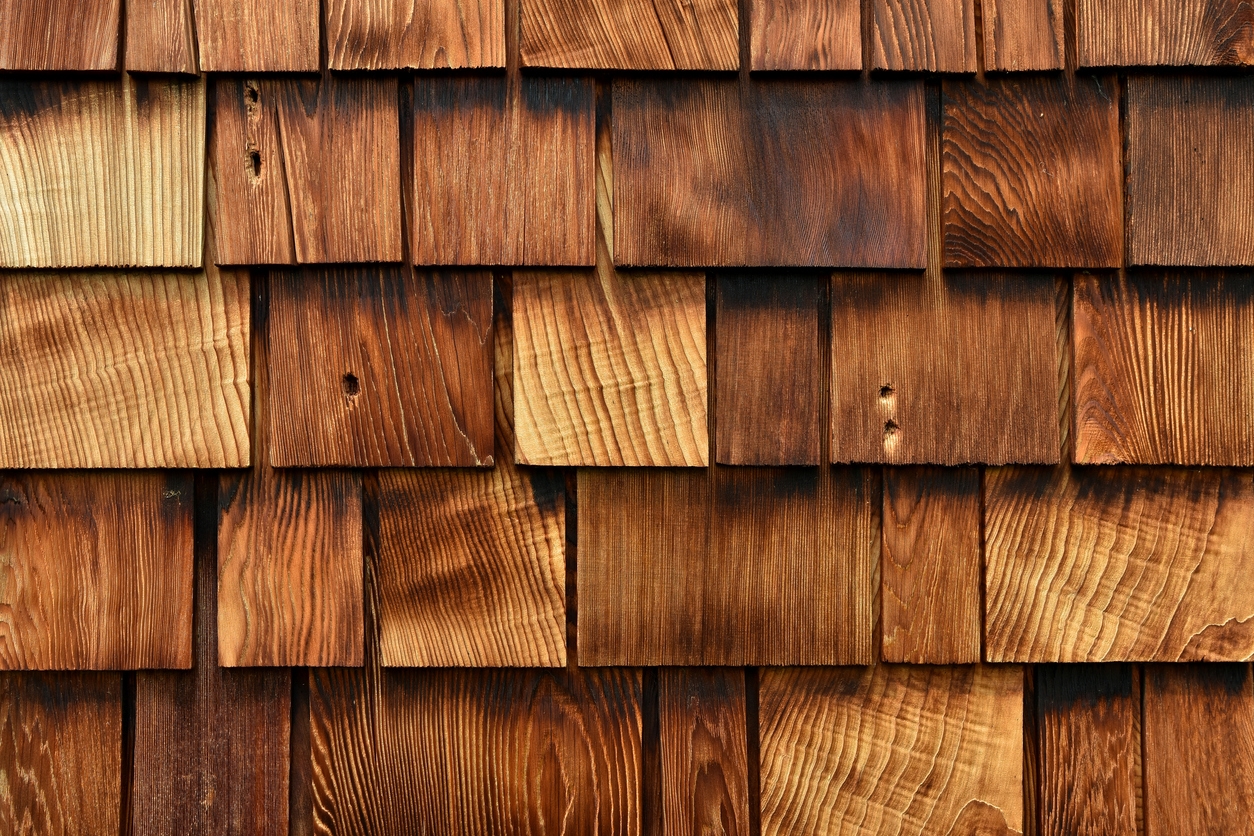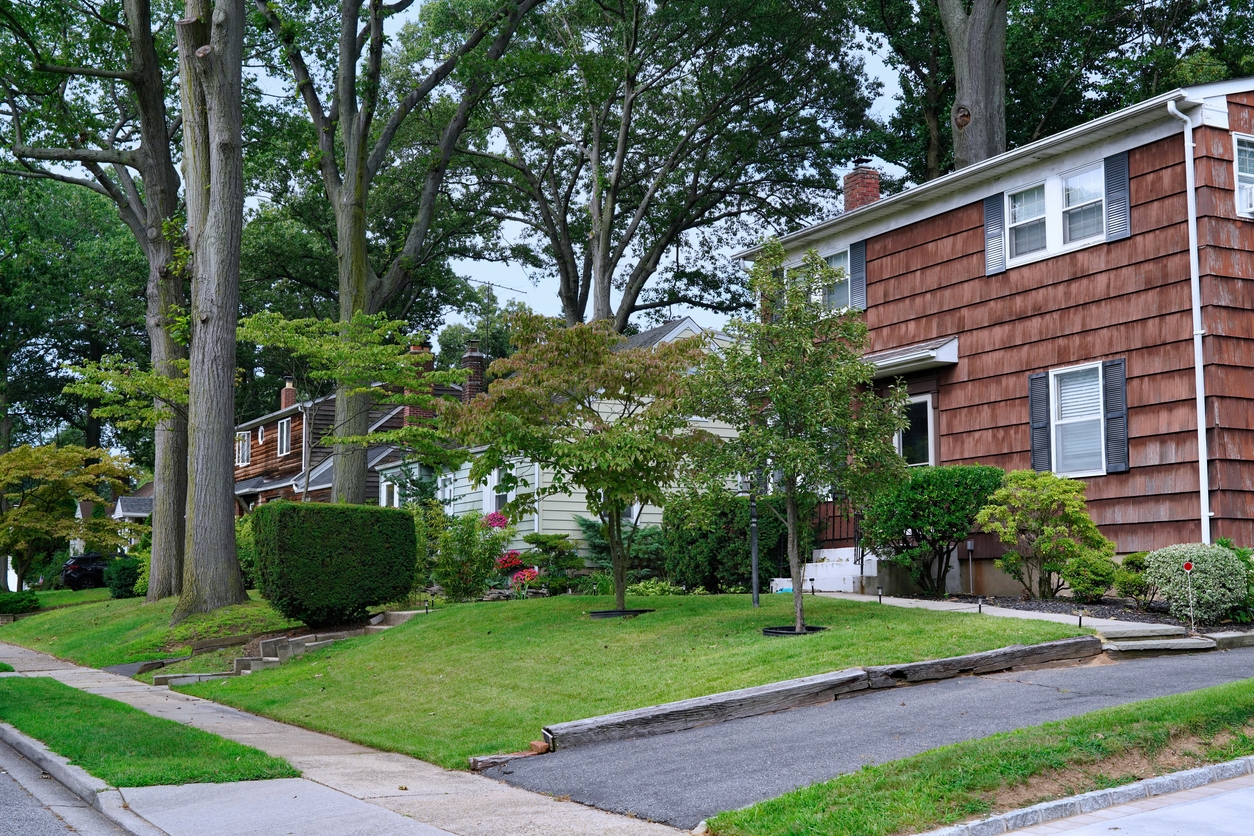Cedar siding is a well known home exterior material in the Danville, CA area due to its charm, natural beauty, and resilience. But like any other material, it needs regular upkeep to look its best. You might have to deal with issues such as wood rot repair as well. If you’re wondering how often you should repaint or restain your cedar siding, you’ve come to the right place.
Characteristics of Cedar Siding
Cedar siding is a popular choice among homeowners, and it’s easy to see why. First and foremost, cedar has a natural durability that makes it stand out from other types of wood. It can withstand the elements, resist decay, and fend off insects better than many other options. This means enjoying its beauty without worrying about constant repairs or replacements.
Speaking of beauty, cedar is renowned for its aesthetic appeal. Its rich, warm tones and unique grain patterns add a touch of elegance and natural charm to any home. Whether you prefer a rustic look or something more polished, cedar can adapt to your style, making it a versatile choice for various architectural designs.
Factors Affecting the Frequency of Repainting or Restaining
How often do you need to repaint or restain a cedar siding? It depends on these factors:
Climate and weather conditions
The climate you live in significantly affects how often you need to touch up your cedar siding. If you’re in an area with harsh winters, heavy rainfall, or high humidity, your siding will face more stress. These conditions can cause the paint or stain to wear down faster, requiring more frequent maintenance. On the other hand, milder climates might allow for longer intervals between touch-ups.
Exposure to sunlight and moisture
Direct sunlight can cause the color of your cedar siding to fade over time. UV rays break down the paint or stain, making it look worn out sooner. Similarly, moisture from rain or humidity can penetrate the wood, leading to issues like peeling or cracking. If your home is in a spot that gets a lot of sun or is frequently damp, you might need to repaint or restain more often.
Quality of previous paint or stain job
The quality of the initial paint or stain job is crucial. If high-quality products and proper techniques are used, your cedar siding will stay protected and look good for longer. However, cheap paints or stains and poor application methods will deteriorate faster, meaning you’ll have to redo the job sooner than you’d like.
Maintenance practices
Lastly, how well you maintain your cedar siding can significantly impact its longevity. Regular cleaning to remove dirt, mold, and mildew, as well as occasional inspections for any signs of damage, can extend the life of your paint or stain job. If you stay on top of maintenance, you can easily catch potential problems early and address them before they become bigger issues, saving you time and money in the long run.
General Guidelines for Repainting Cedar Siding
A good rule of thumb for repainting cedar siding is every 5 to 7 years. This timeframe can vary based on factors we mentioned earlier, like climate and exposure to sunlight, but it’s a solid starting point for planning your maintenance routine.
Signs That It’s Time to Repaint
While following a general schedule is helpful, paying attention to the condition of your siding is even more important. Here are some telltale signs that it’s time to repaint:
- Peeling paint: If the paint on your cedar siding is starting to peel, it’s time for a new coat. Peeling indicates that the paint is no longer adhering properly, exposing the wood to the elements.
- Fading color: Over time, the vibrant color of your paint will start to fade due to exposure to sunlight and weather. If your siding looks dull and washed out, it’s a sign that a fresh coat of paint is needed to restore its appearance.
- Cracks or blisters: Cracks or blisters in the paint surface clearly indicate that the paint is breaking down. If not addressed promptly, these issues can allow moisture to seep into the wood, leading to more significant problems.
General Guidelines for Restaining Cedar Siding
Now, when it comes to restaining, you need to do it more frequently than repainting. A good guideline is every 3 to 5 years. Like with painting, this can vary based on your local climate, the sunlight your home gets, and other factors, but it’s a valuable timeframe for planning purposes.
Signs That It’s Time to Restain
Just like with paint, there are clear signs that indicate when your cedar siding needs to be restained:
- Loss of color: One of the most obvious signs is when the wood starts to lose its rich, natural color. If your siding looks faded or dull, it’s time to apply a new stain to rejuvenate its appearance.
- Water absorption: Splashing a bit of water on your siding is easy to test whether it needs restaining. If the water soaks into the wood rather than beading up on the surface, the protective stain is no longer effective, and it’s time for a new coat.
- Visible wear and tear: If you notice any signs of wear and tear, such as rough patches, cracks, or splinters, it’s a good idea to restain the siding. These issues can compromise the wood’s durability and appearance; a fresh stain can help protect it.
Types of Paint and Stain Suitable for Cedar Siding
When it comes to painting or staining your cedar siding, choosing the right products is crucial. You’ll want to use a high-quality exterior paint specifically designed for wood siding. Acrylic latex paint is a popular choice because it offers excellent adhesion, flexibility, and durability. It’s also resistant to mildew, which is a bonus for maintaining a clean and fresh look.
Depending on the look you’re going for, there are several stain options. Solid stains provide a rich, opaque finish that hides the wood grain while allowing the texture to shine through. Semi-transparent stains offer a more natural look, enhancing the wood’s grain and character while providing some color. Transparent stains give the least color but still offer protection while letting the natural beauty of the cedar shine through.
Regardless of the paint or stain you choose, always go for high-quality, weather-resistant products. These are specifically formulated to withstand the elements, including UV rays, rain, and fluctuating temperatures. Investing in top-notch products might cost a bit more upfront, but it will save you money and effort in the long run by extending the time between repainting or restaining.
How to Prepare and Apply Paint or Stain for Cedar Siding
Preparation
Proper preparation is key to ensuring your paint or stain job looks great and lasts as long as possible. Here’s a step-by-step guide to get your cedar siding ready:
- Clean the siding: Clean the cedar siding thoroughly to remove dirt, mildew, and any loose debris. A mixture of water and mild detergent usually does the trick. For tougher stains or mildew, you might need a specialized cleaner.
- Repair any damage: Inspect the siding for any cracks, holes, or other damage. Repair these areas before proceeding. This might involve filling cracks with wood filler or replacing damaged sections.
- Sand the surface: Lightly sanding the surface helps the paint or stain adhere better. Use fine-grit sandpaper and be gentle to avoid damaging the wood.
- Remove old paint or stain: If it is peeling or flaking, you’ll need to remove it. Scraping and sanding can help get rid of these old layers, ensuring a smooth surface for the new application.
- Prime the wood (for paint): Applying a high-quality primer is essential if you’re painting. It helps the paint adhere better and provides an extra layer of protection.
Proper Techniques for Applying Paint or Stain
Applying paint or stain correctly is just as important as the preparation. Here are some tips for a smooth and even application:
- Use the right tools: Brushes, rollers, and sprayers all have their uses. Brushes are great for detail work, rollers can cover large areas quickly, and sprayers offer a smooth, even finish.
- Follow the grain: Always apply paint or stain in the direction of the wood grain. This helps ensure a more natural look and better penetration of the product.
- Apply multiple thin coats: It’s better to apply several thin coats rather than one thick coat. This helps prevent drips and ensures a more even coverage.
Conclusion
Cedar siding is a beautiful and durable choice for your home but requires regular maintenance to stay in top shape. We’ve covered the importance of choosing the right paint and stain products, properly preparing your siding, and applying the paint or stain carefully. We’ve also discussed the need for routine inspections, minor touch-ups, and regular cleaning to keep your cedar siding looking its best.
If you need help painting, staining, or maintaining your cedar siding, don’t hesitate to contact Custom Painting, Inc. Our team of experts is here to provide professional services and advice, ensuring your home’s exterior looks beautiful and lasts as long as possible. Fill out our online form or call us today at 925-866-9610 to schedule a consultation and see how we can help you keep your cedar siding in pristine condition.




